Back to top: Ceramics from Unit K1
Introduction
The K1 ceramics were analysed immediately in the field by Marilyn Kelly-Buccellati. As these were the first excavations, the system was still being developed, as was the first definitions of wares. These are well-described in Mozan 1.
Back to top: Ceramics from Unit K1
Methodology and corpus
Pottery was recorded as two main types: complete, nearly complete or restorable vessels were recorded as items, while sherds (fragments of pottery) were recorded on special ceramic analysis sheets. The data include ware and shape type, number of sherds and any other comments by the ceramicist noted in the field (e.g. on the temper, inclusions, colour, decoration etc). The sheets used during the early campaigns look slightly different from later versions.
However, these are easily converted to the current format, which is also what has been done for this digital book.
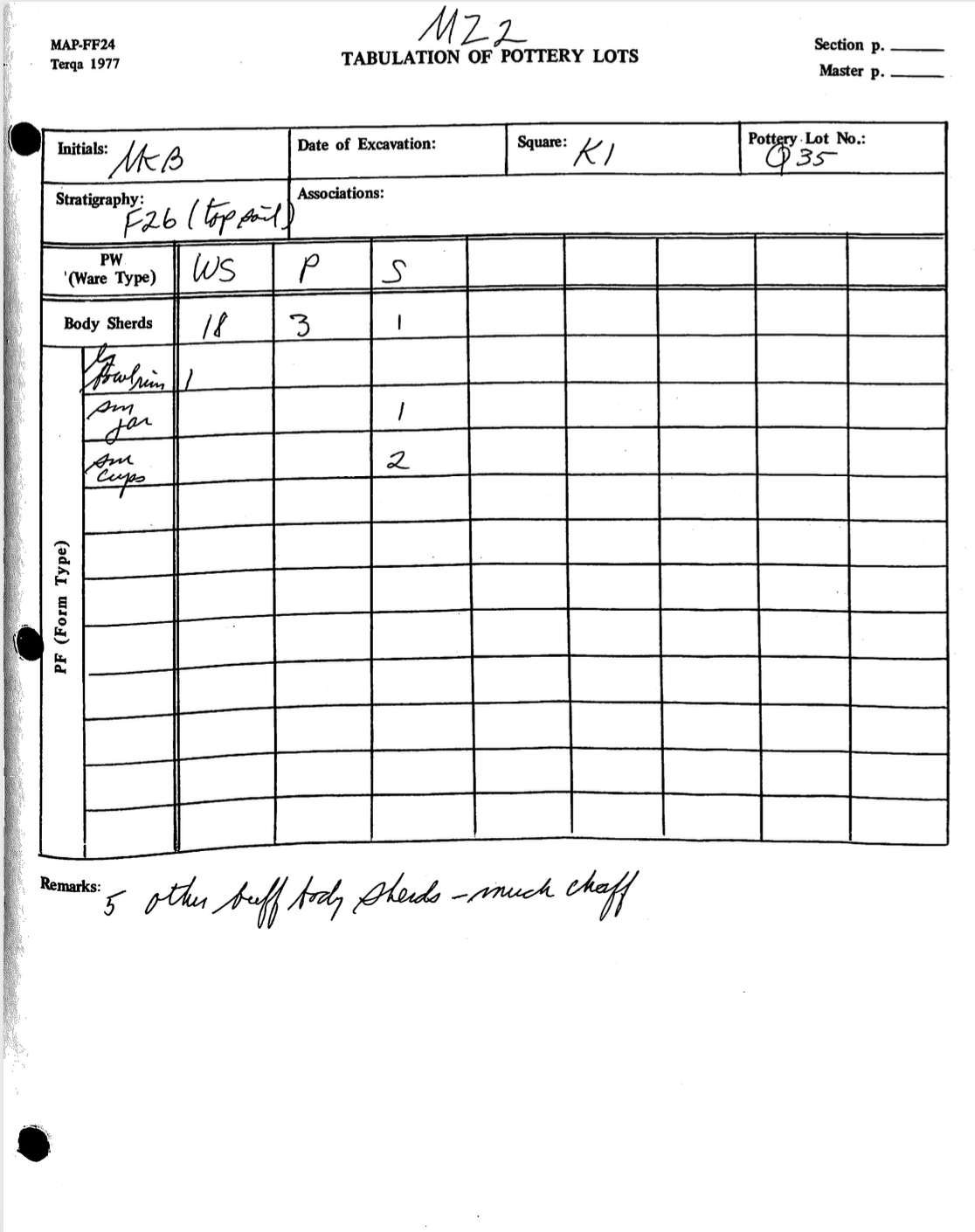
Example of pottery recording sheet from 1985 (MZ2)
The data presented here is as complete as possible, but it should be noted that there are gaps: It has not been possible to locate the handwritten records from 1984; the qp (pottery sherds) and corresponding statistics are here therefore based almost only on the 1985 records.
A total of 2915 ceramic sherds are included in the statistics here, 531 of which are shape (diagnostic) sherds, and 2384 of which are body sherds.
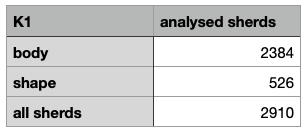
Back to top: Ceramics from Unit K1
Ceramic review
A review of the ceramics has been carried out as part of the preparation of the digital book. As mentioned above, given the early date of the records, this involved both substantial digitisation of old handwritten records, and conversion to the current ceramic typology. Many records also needed to be assigned labels in the current format. As such, items (ceramic, metal, glyptic) sometimes using the format K1m0001 were converted to the item format K1.1. Ceramic items in the format K1q2-1 have been converted to qp, with the format K1q2-p1. The system with p numbers was not in use at this point, and all other ceramic sherds have thus subsequently also been assigned such a number as part of the review process (e.g. K1q27-p69). See also the errors page. Given the lack of individualised original labels, some duplication may occur in the current records (where it has not been possible to determine whether the original entries represented duplicates of the same sherd, or several sherds).
Back to top: Ceramics from Unit K1
Wares and chronological implications
The distribution of wares in K1 is markedly different from that of most other units, reflecting its main chronological horizon in the ED III period. The majority of sherds (50%) belong to Simple ware, which is a high-fired buff or yellow-buff fine ware with a low level of temper, characteristic of the ED III period. There is followed by Wet Smooth ware, which is similar to Simple ware, but often with a small amount of temper, and with a smoothed surface. Rough ware is another fairly common type found in the assemblage, which, as the name suggests, has a rough surface, and with white or plum-coloured plaster on the interior.
Some examples of Chaff Tempered ware, Pebble Tempered ware, Metallic ware, Khabur ware, Ninevite 5 ware, and Incised ware were also recorded.
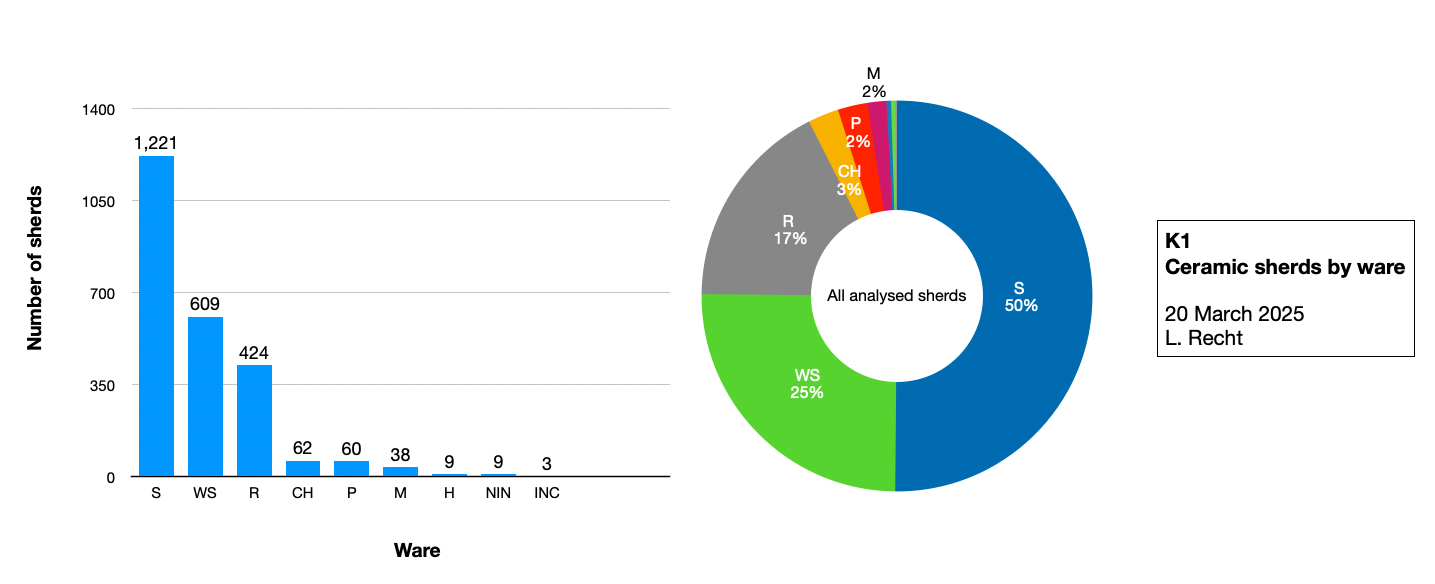
Back to top: Ceramics from Unit K1
Decoration
Few vessels were decorated in the K1 corpus. Examples includes Ninevite 5 ware with incised decoration - also hinting at earlier occupation of parts of the tell.
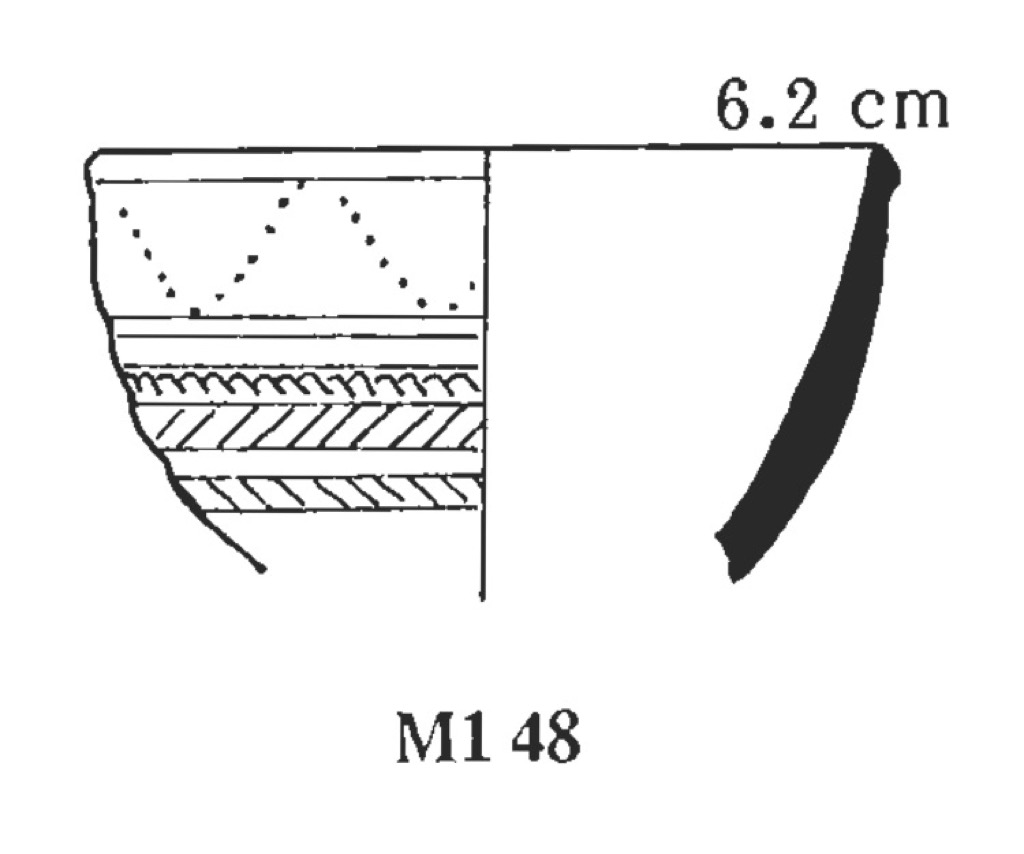
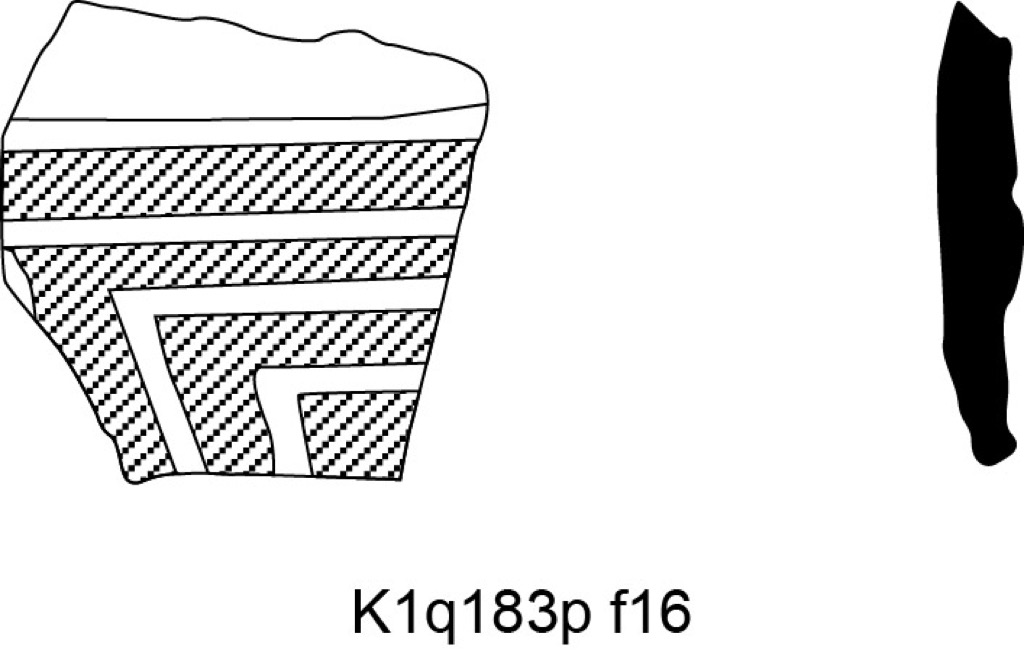
Other examples: incised parallel and wavy lines
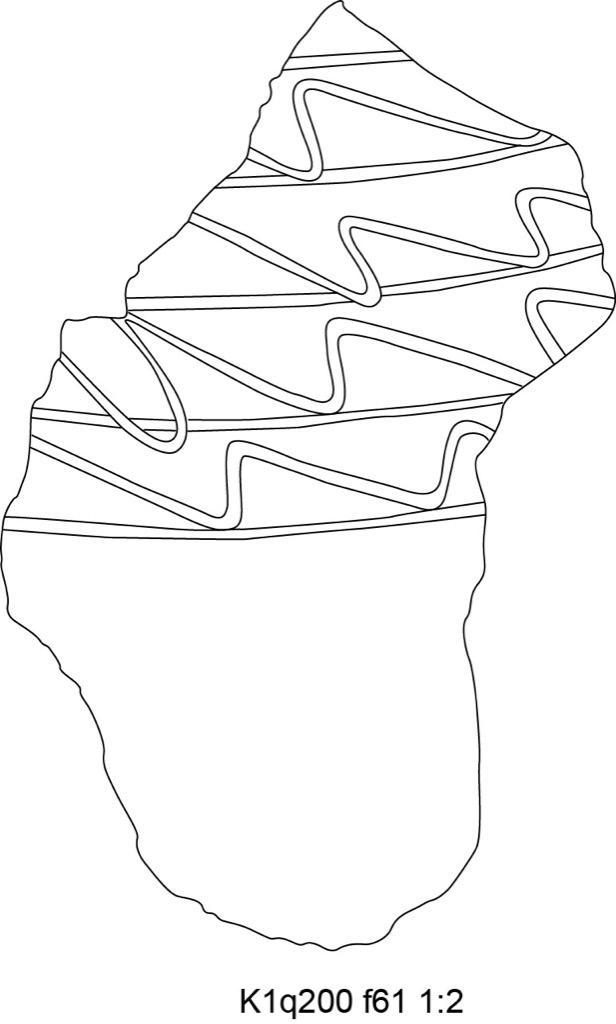
Back to top: Ceramics from Unit K1